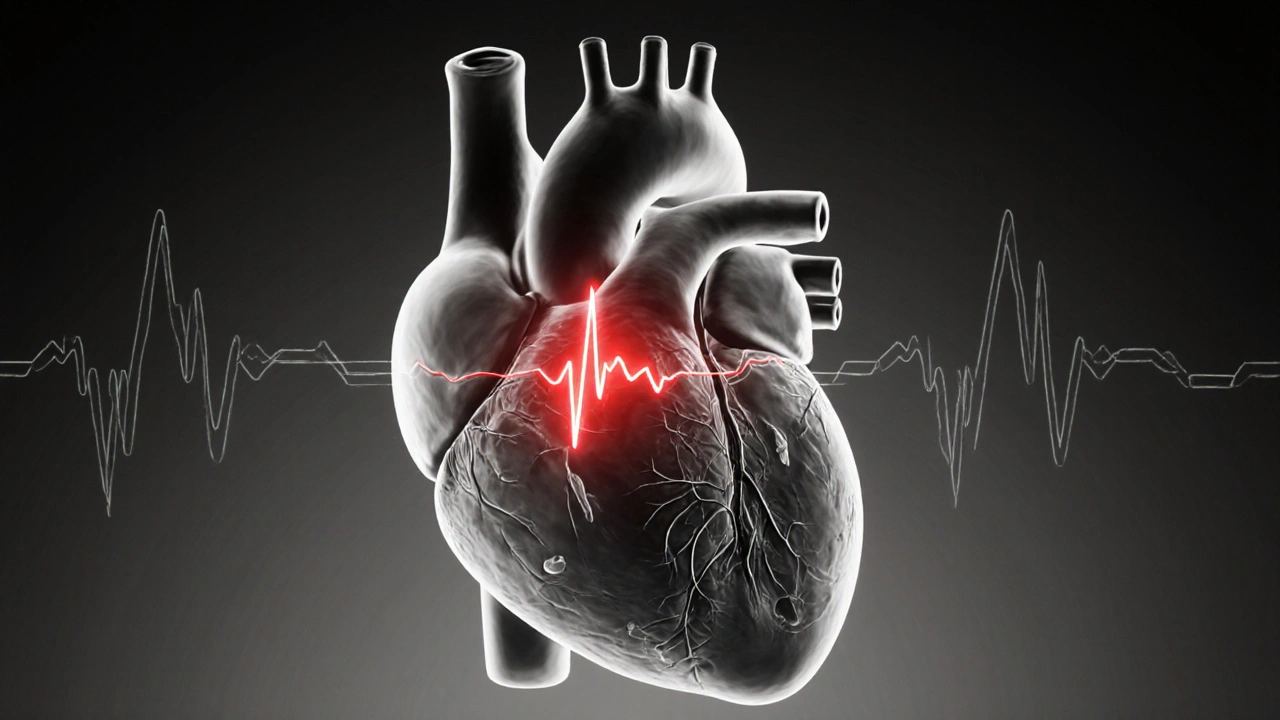Supraventricular Tachycardia: Quick Facts and Practical Guidance
When dealing with Supraventricular Tachycardia, a rapid heart rhythm that starts above the ventricles. Also known as SVT, it is a subset of arrhythmia, any irregularity in the heart’s beating pattern.
SVT can strike anyone, but it shows up most often in teens and young adults. The hallmark is a sudden jump in heart rate—often over 150 beats per minute—accompanied by palpitations, light‑headedness, or shortness of breath. Because the electrical signal originates above the ventricles, the QRS complex stays narrow on an ECG, which helps clinicians separate SVT from ventricular tachycardia. Early detection matters: untreated SVT can lead to heart‑muscle fatigue, especially if episodes last for hours.
Key Concepts and Treatment Options
Recognizing SVT means looking at the ECG, checking for a regular, narrow‑complex tachycardia, and asking about triggers like caffeine, stress, or certain medications. When a patient also has atrial fibrillation, an irregular, often fast heart rhythm that starts in the atria, the treatment plan gets more layered. A‑fib can raise the risk of clot formation, so doctors may add anticoagulation even while treating the SVT. For immediate rate control, many turn to beta‑blockers; Carvedilol, a non‑selective beta‑blocker with alpha‑blocking properties is popular because it calms the heart without dropping blood pressure too sharply.
Beyond medication, simple vagal maneuvers—like a cold‑water splash or bearing down—often break the SVT circuit. If these fail, a short course of calcium‑channel blockers or anti‑arrhythmic pills can be prescribed. In cases where SVT recurs frequently, an electrophysiology study followed by catheter ablation offers a near‑curative fix. When patients have overlapping risk factors for clotting, especially with concurrent atrial fibrillation, clinicians may introduce Apixaban, an oral anticoagulant that reduces stroke risk in irregular heart rhythms. While Apixaban isn’t a first‑line SVT drug, it protects against stroke if the rhythm disorder blends with a‑fib or other thrombo‑embolic concerns.
Understanding how SVT fits into the broader landscape of heart rhythm disorders helps you spot the right treatment at the right time. Below you’ll find our curated collection of articles that dive deeper into specific drugs like Carvedilol, explore anticoagulation with Apixaban, and discuss related topics such as heart‑failure depression, medication tapering, and more. Use these resources to build a clear, evidence‑based plan for managing rapid heartbeats and any accompanying conditions.
Amiodarone Effectiveness for Supraventricular Tachycardia: Benefits, Risks & Dosing
- Laura Ledas
- Sep, 6 2025
Explore how Amiodarone works for supraventricular tachycardia, its success rates, dosing guidelines, side‑effects, and how it stacks up against other rhythm drugs.
Learn More